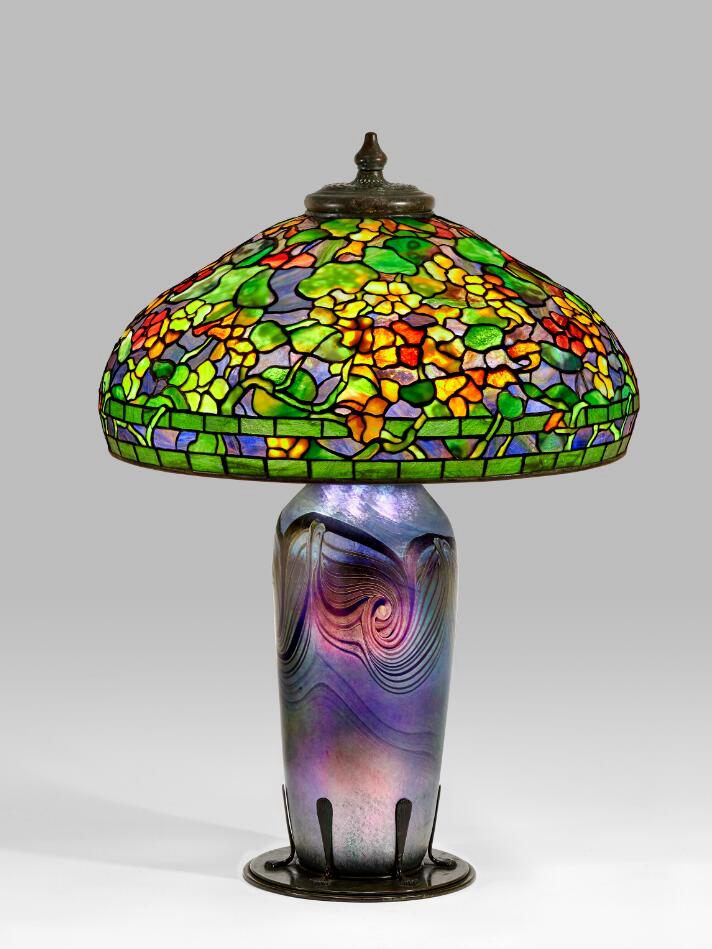
Tiffany lamps are still fashionable and collectible even though they are about a century old. A genuine antique Tiffany lamp made in the Tiffany Studios prior to 1928 is very rare. Searching for accessible Tiffany-style lamps is a better choice because authentic items can cost tens of thousands of dollars, sometimes even hundreds of thousands.
It can be difficult for contemporary craftspeople to unlock the secret of the best Tiffany artistry. Tiffany assembled the best artisans, glassblowers, innovators, and craftspeople of the day, and only the best glass and bronze were utilized for the lamp bases. Such an undertaking is difficult to duplicate now.
Your workplace or house will instantly look more attractive with the addition of an antique lamp. You must, however, be aware of the cost of these vintage tiffany lamps. In order to estimate the worth of an antique tiffany lamp, here is the list of 18 rare vintage tiffany lamps.
Table of Contents
What are Tiffany’s lamps?
These are high-class lamps were initially produced as gas or oil lamps. These would have been changed to electric around the turn of the century.
It is said that Edison himself suggested to Tiffany adding a light behind the stained glass when electricity became more widely used. It’s amazing to consider that these great personalities interacted socially while still created history by working independently.
Numerous creations can be attributed to other gifted artists working for the Tiffany company.
History of Antique Tiffany Lamps
Frequently associated with the company, Charles Lewis Tiffany, founded, Tiffany & Co., was Charles Comfort Tiffany (1848–1933). Contrary to Charles’ hopes that his son would succeeding him as the company’s head, Louis’ interests tended to go more toward those of an artistic nature.
Early in the 1880s, while purchasing sheets of commercial window glass from Brooklyn shops, Louis Tiffany began to experiment with art glass. December 1st, 1885 saw the founding of his “Tiffany Glass Company.” The Tiffany Glass and Decorating Company was its previous name; Tiffany Studios was its new one by 1900. When the factory was at its busiest, it employed more than 300 people, comprising artists, designers, glassblowers, and various other craftsmen.
While several were on display at the Chicago World’s Fair in 1893, Tiffany’s first lamps that were made for sale didn’t start appearing until approximately 1898. Tiffany Studios produced glass mosaics, vases, perfume bottles, tiles, desk furniture, stained-glass windows, and more in addition to lamps and lamp shades. The company continued to run until 1928.
At Laurelton Hall, his vacation residence on Long Island, Tiffany established the Louis Comfort Tiffany Foundation in 1919 as a retreat for budding artists. He died in 1933 at the age of 85. The original “Ecclesiastical” section continued to operate from 1933 until about 1936 in order to complete the company’s incomplete window commissions.
Production Process for Vintage Tiffany Lamps
-
Shades
It took a lot of time and effort to create Tiffany Studios lamps. The company’s craftspeople hand-selected each tiny piece of glass from thousands of glass sheets to create lampshades out of hundreds of colorful glass pieces. In addition to being categorized, each lamp is made utilizing the Copper Foil process. The lamp’s design is first sketched out on a substantial piece of cardboard. Next, the pattern piece is written with a number and a glass color. The glass is set over the pattern once it has been drawn and named, then it is traced.
After the design has been drawn onto the glass, the pieces may be cut and ground into the proper shapes. After that, the pieces must be cleaned before the edges can be covered in copper foil. The copper foil solution makes it possible for the components to stick together. The edges of the lamp need to be soldered together for a secure hold after it has been set appropriately and is properly bonded. After the soldering is finished, the lamp is cleaned to bring out its beauty.
-
Bases
Because the cost of bronze at the time the lamps were created was high, Tiffany Studios hollowed out the bases and inserted a substantial lead ring to support the weighty shades. Turtleback, Favrile, and blown glass are used as extra ornamentation on high-end bases. Typically, Tiffany Studios uses a turn-paddle knob socket on their lamps instead of a pull chain. Typically composed of bronze, the bases should have a fading patina or little color change to indicate their age.
Tiffany Lamp Styles
The depth and variety of Tiffany style lamps available today, with their many different shapes, colors, and patterns, is remarkable. Additionally, there are floor lamps, wall lights, hanging or pendant lamps, and novelty lights. Several examples are as follows:
- Mini Lamps
- Novelties
- Pendants
- Lanterns
- Floor Lamps
- Up-lighters
- Large Statement Lamps, some with twin pulls
- Inverted Pendants
Designs of Tiffany Lamp Shades
Tiffany lamps’ superior craftsmanship and classic appeal immediately attracted the attention of the American elite, whether they were made of blown glass or had leaded glass shades. Here are a handful of the motifs you might see on real Tiffany lamp shades, which draw inspiration from the natural themes of the Art Nouveau style.
- Medieval motifs
- Tree branches
- Globe
- Zodiacal symbols
- Wisteria
- Renaissance designs
- Shapes of Leaded Glass Shades
- Bamboo designs
- Floral Patterns
- Cone
- Bamboo designs
- Vines
- Medieval motifs
- Renaissance designs
- Geometric Shapes
- Dragonflies
- Shapes of Leaded Glass Shades
- Tree branches
- Shapes of Leaded Glass Shades
Tiffany Lamp Motifs
- Tiffany lamp with butterfly motifs
- Dragonfly Tiffany lamp
- Tiffany lamp with turtle motif
- Nautilus Tiffany lamp
- Poppy Tiffany lamp
- Daffodil Motif Tiffany lamp
- Greek key lamp
- Wisteria Tiffany lamp
- Peacock Motif Tiffany lamp
What Makes a Tiffany Studios Lamp So Valuable?
If you’re not familiar with vintage Tiffany lamps, there are a few things you should know to comprehend why the art and collecting communities place such a high value on these lamps. The most expensive Tiffany Studios lamp was sold at an auction recently, costing $3.37 million. Even replicas of Tiffany lamps can sell for thousands of dollars. The value of these objects comes from
-
Exceptional Quality Materials
The materials the craftspeople utilized to create Tiffany Studios lamps are where its worth comes from. Genuine Tiffany lamps are always made with pure bronze bases and were individually handcrafted by a small team of artisans. Additionally, only real Tiffany glass with distinct features and coloration will ever be used in the shade’s construction.
-
Craftsmanship
Tiffany Studios created their lights using original, frequently cutting-edge techniques. Tiffany developed a brand-new copper foil technique for securing stained glass. This technique made it unnecessary to join the stained glass pieces with strong rods, giving it a more fragile appearance. In addition, he developed a brand-new variety of glass called favrile glass by combining several hues to produce a stunning iridescent hue.
-
Value and Rarity
Particularly in the field of art, an item’s value increases with its rarity. Since there is only one Mona Lisa, it is a priceless work of art. Because there are so few Tiffany Studios lamps in existence worldwide, they are uncommon and demand a high price at auctions. The lamps are now hard to come by because Tiffany Studios ceased manufacturing them in the early 20th century. With the help of our Tiffany Studio Lamp pricing guide, you can learn more about how much these lamps are worth.
-
Restoration Work
Finding evidence of restoration might be difficult, especially when it was done correctly. Older restorations, though, weren’t perfect, and you can still see evidence of them. The value of the lamp is rarely significantly impacted by professionally completed repairs, but it is preferable to have a piece with the greatest number of original components.
-
Condition
When purchasing an antique Tiffany lamp, perfection is not something you should be looking for, but the condition is quite important in determining the price. Most collectors will, however, accept and pay for a piece with a broken shade, a few cracks, or small glass fragments missing.
How to Find Value of your Tiffany Lamp?
The majority of Tiffany Studios lights are valuable and sought-after. As a result, collectors with limitless funds are willing to spend a lot of money on a single object.
Reproduction Tiffany lamps cost thousands of dollars, but collectors prefer the original thing. What makes Tiffany Studios lamps valuable is the obvious question?
Antique Tiffany lamps come in a wide range of prices. The intricate detail and skilled craftsmanship of Tiffany Studios’ “Dragonfly” lamps give them an extraordinarily high value, although other elements like condition and provenance can also influence a Tiffany lamp’s value.
A professional evaluation is the best approach to establish an ACCURATE VALUE FOR YOUR TIFFANY LAMP. Auction companies work with experts that properly understand Tiffany Studios lamps.
20 Rare Vintage Tiffany Lamps
1. RARE ‘POND LILY’ TABLE LAMP, CIRCA 1903 sold for $3,372,500
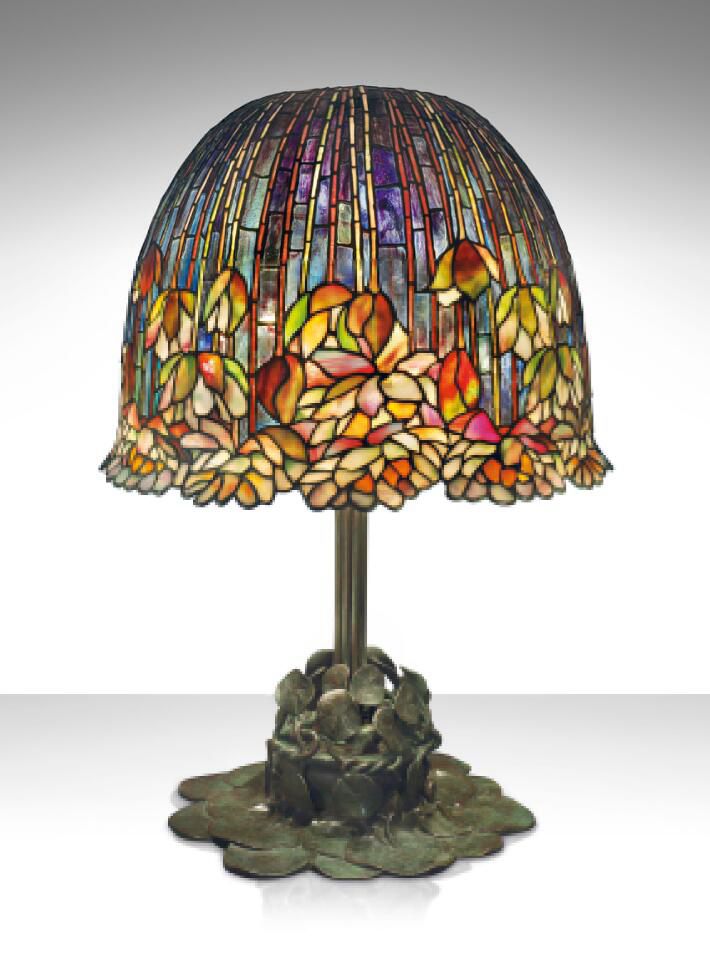
2. RARE ‘ELABORATE GRAPE’ TABLE LAMP, CIRCA 1903 sold for $478,800
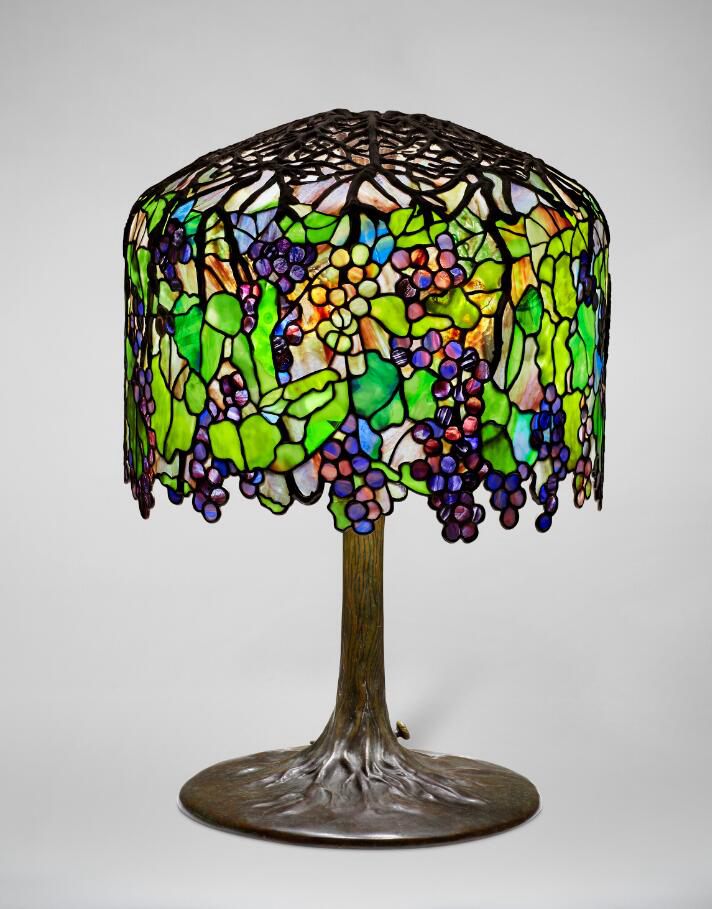
3. EARLY AND RARE ‘DRAGONFLY AND WATERFLOWERS’ TABLE LAMP, CIRCA 1900 sold for $756,000
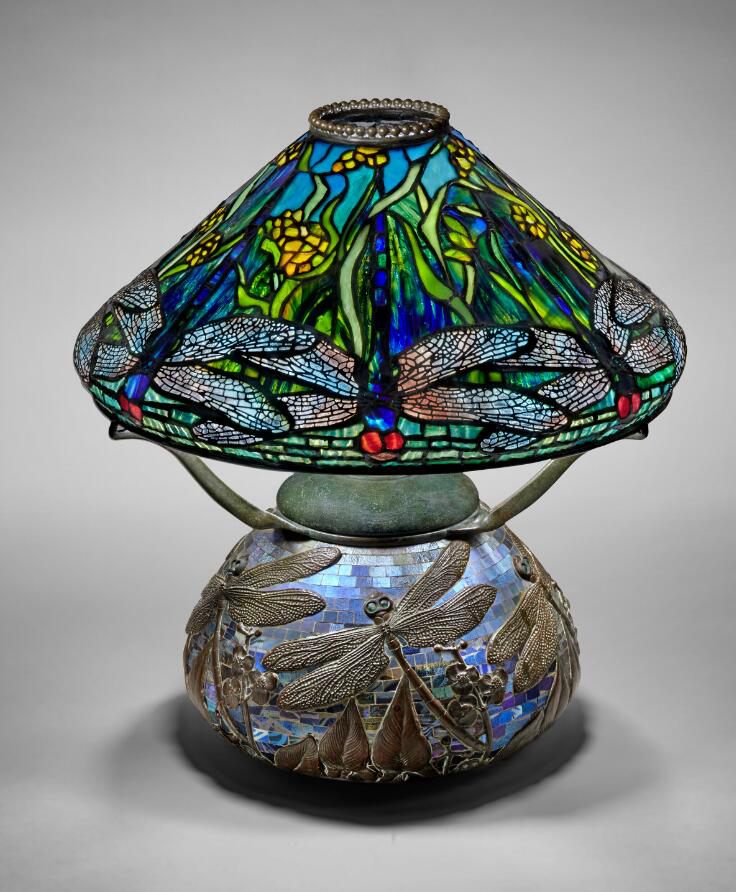
4. A RARE ‘PEBBLE’ TABLE LAMP, CIRCA 1901-1904 sold for $537,500
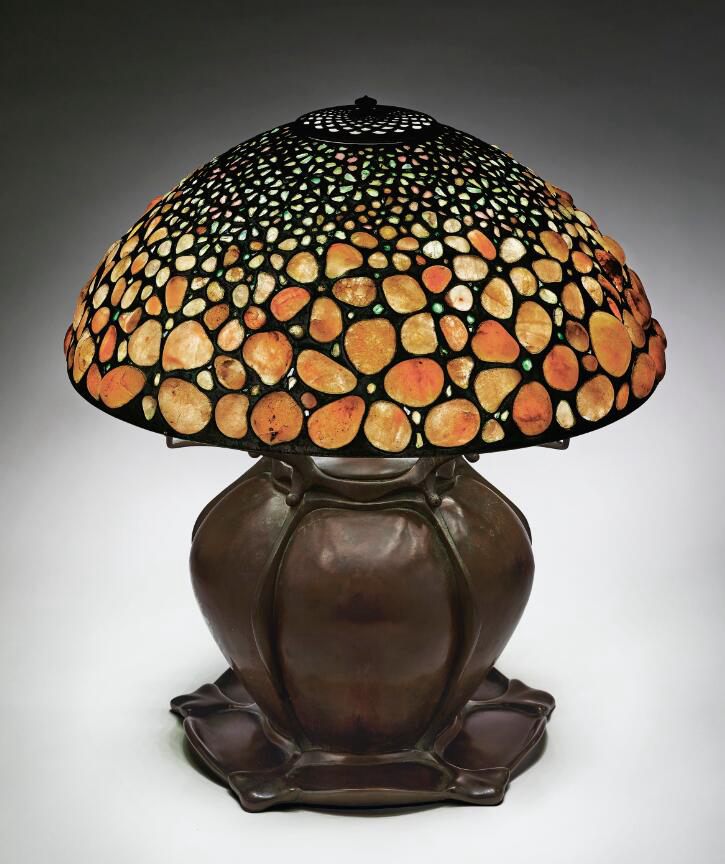
5. An antique high quality leaded glass, bronze and mosaic ‘lotus’ lamp sold for $2,807,500
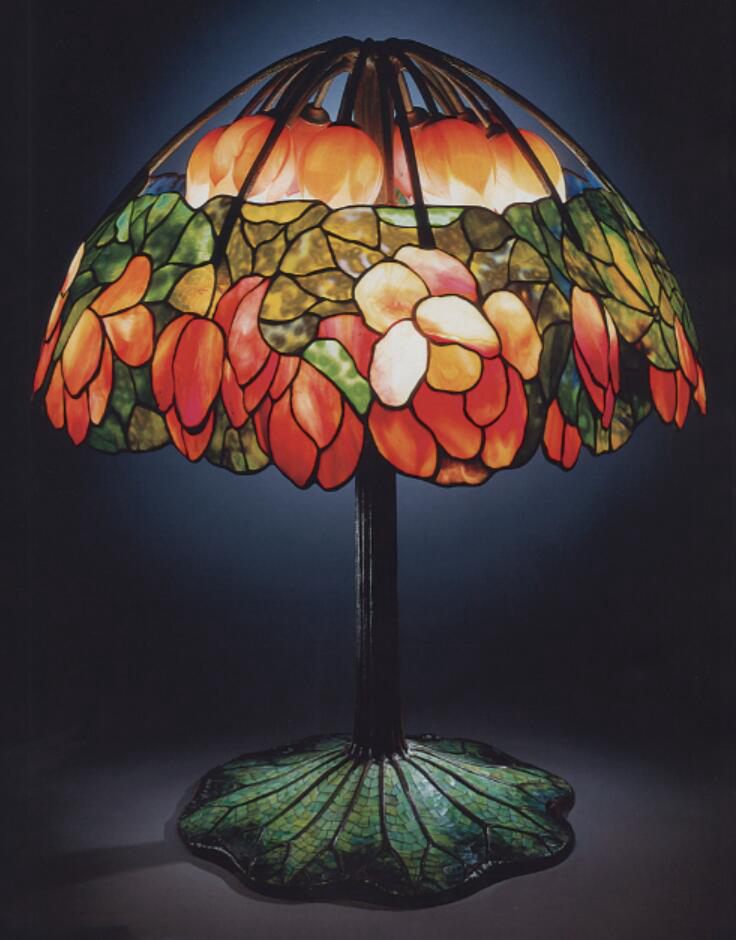
6. ‘PEONY’ FLOOR LAMP, CIRCA 1915 sold for $144,900
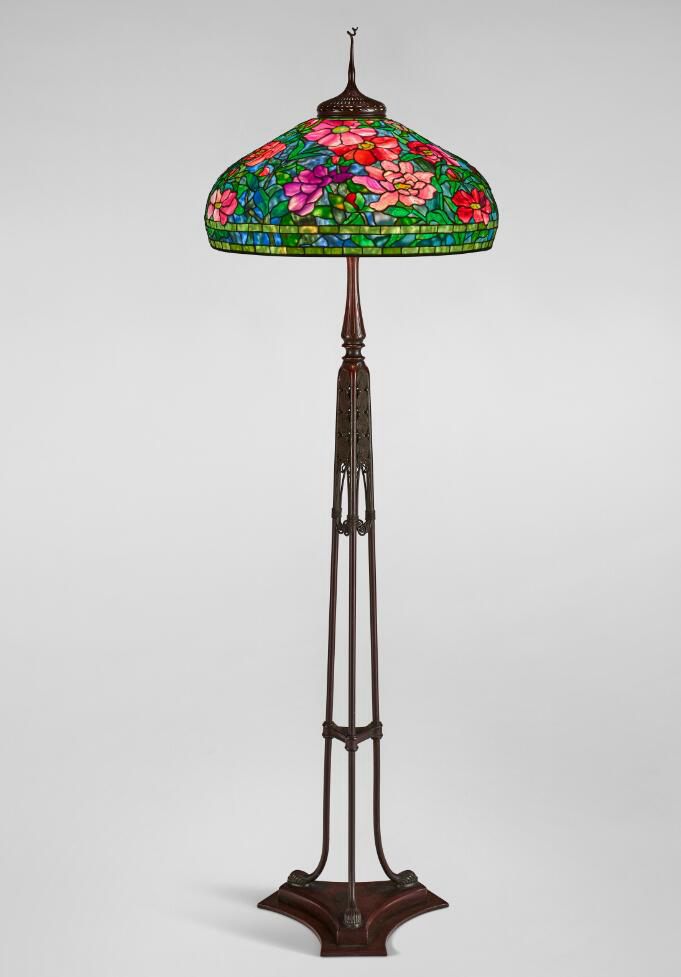
7. RARE ‘YELLOW ROSE’ FLOOR LAMP, CIRCA 1905 sold for $819,000
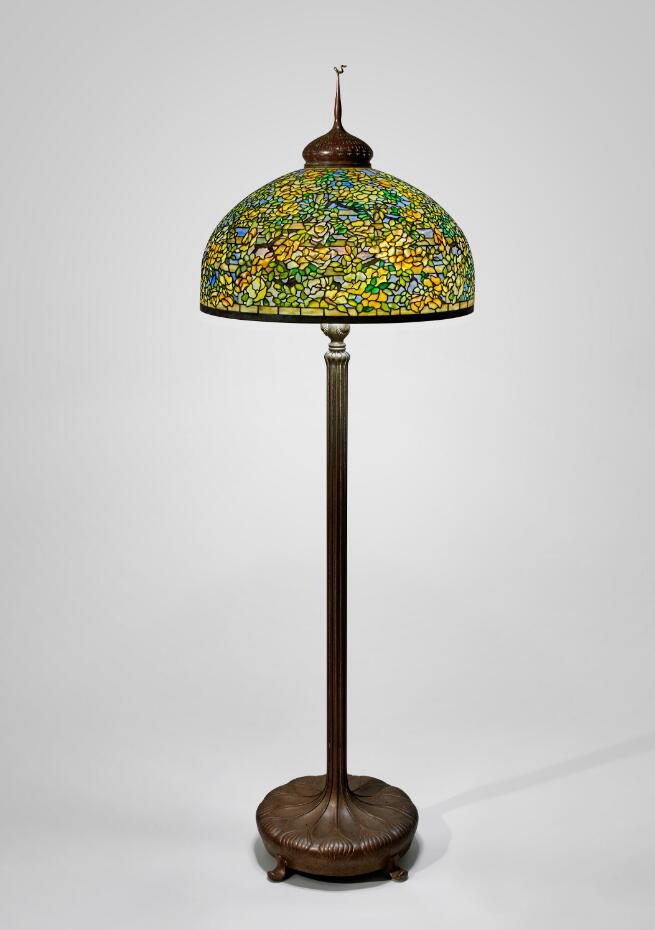
8. ‘CLEMATIS’ THREE-PANEL SKYLIGHT, FOR HARBEL MANOR, AKRON, OHIO, CIRCA 1915 sold for $315,000
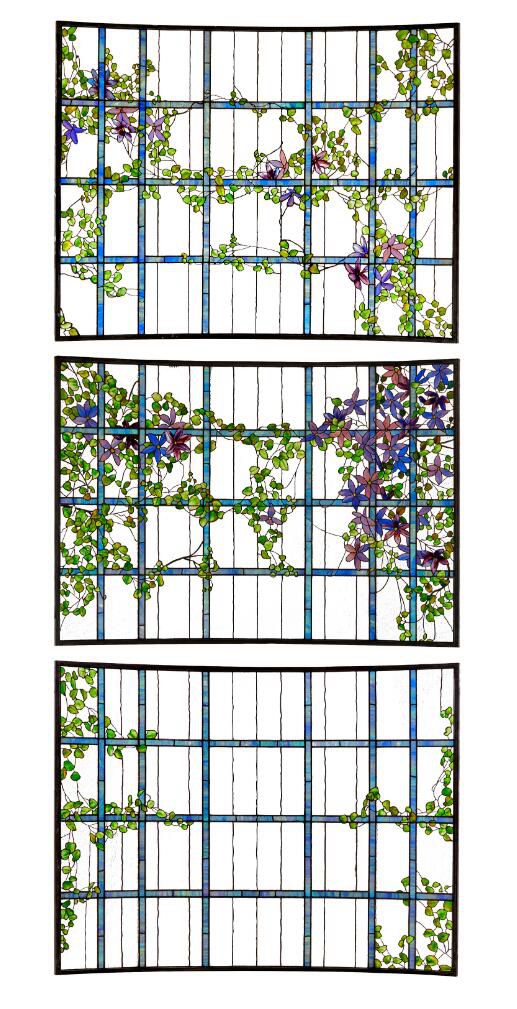
9. RARE ‘HANGING HEAD DRAGONFLY’ CHANDELIER, CIRCA 1905 sold for $1,008,000
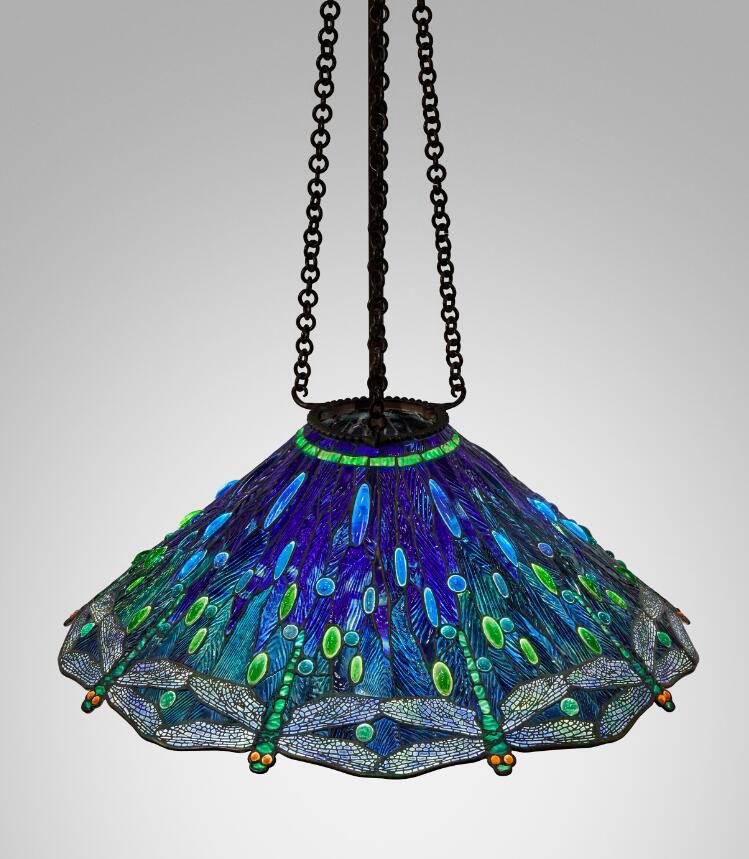
10. Tiffany Studios Oriental Poppy Chandelier sold for $550,000.00
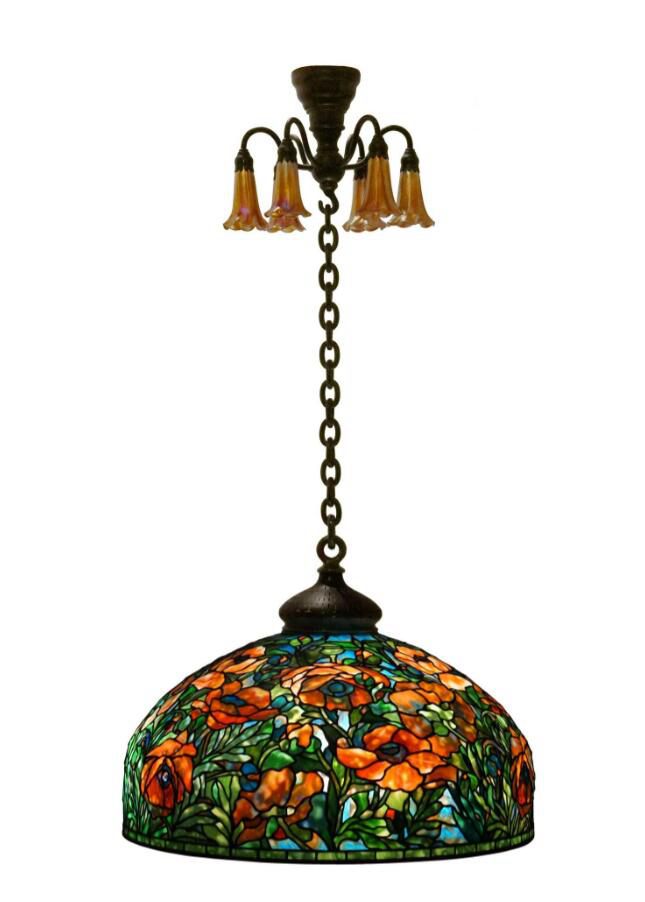
11. Tiffany Studios “Elizabethan” Table Lamp sold for $75,000.00
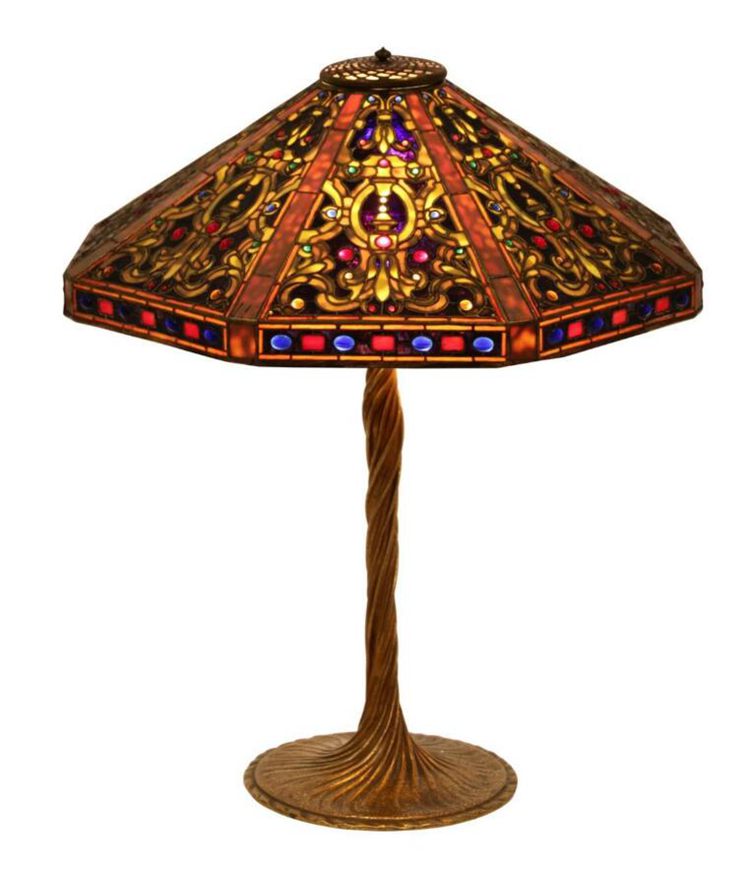
12. Tiffany Studios Leaded Glass Aquatic Fish Lamp sold for $160,000.00
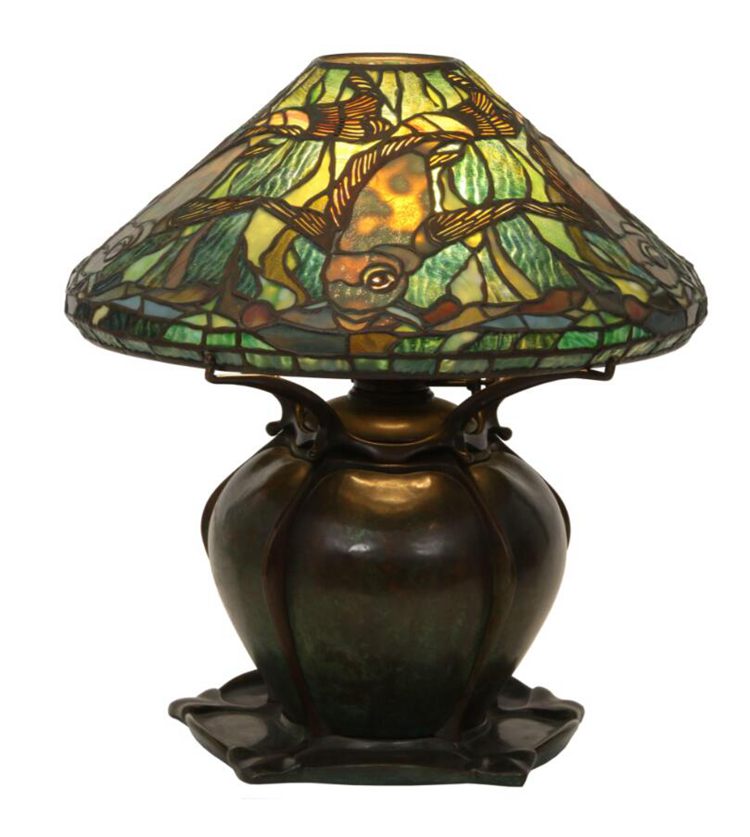
13. Rare Tiffany Studios 18 Light Lily Lamp sold for $60,000.00
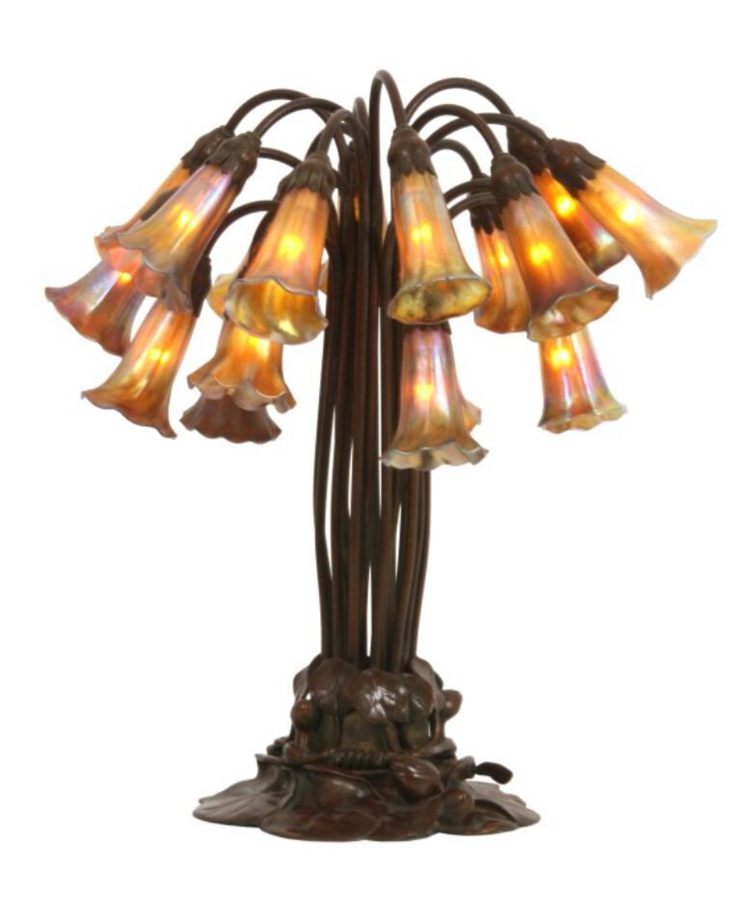
14. Tiffany Studios Linenfold Table Lamp sold for $18,000.00
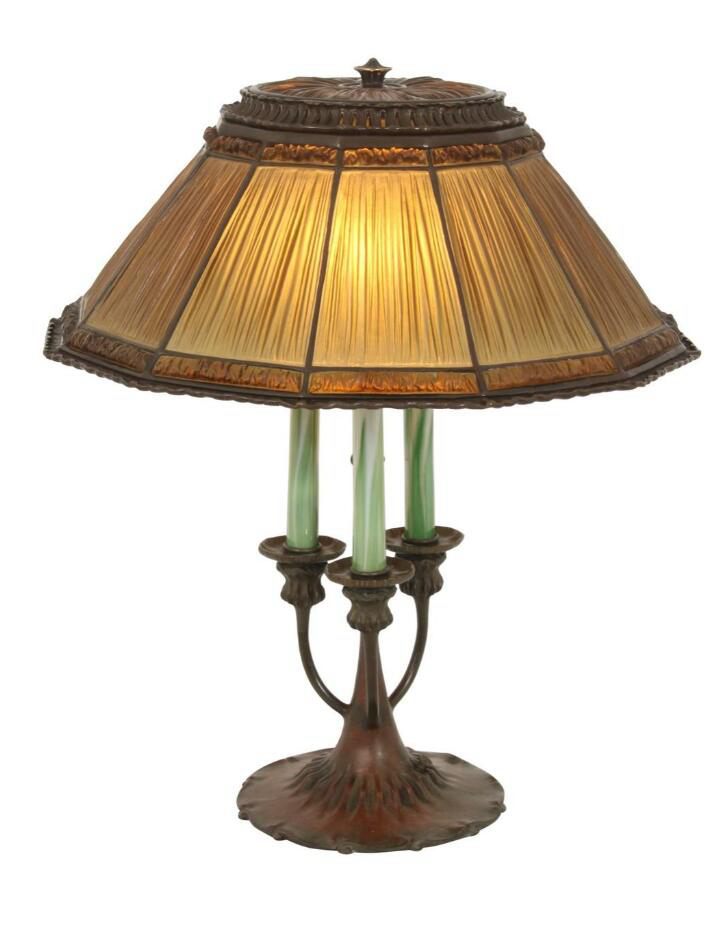
15. Tiffany Studios 24 In. Inverted Hanging Lamp with turtle backed shades sold for $55,000.00
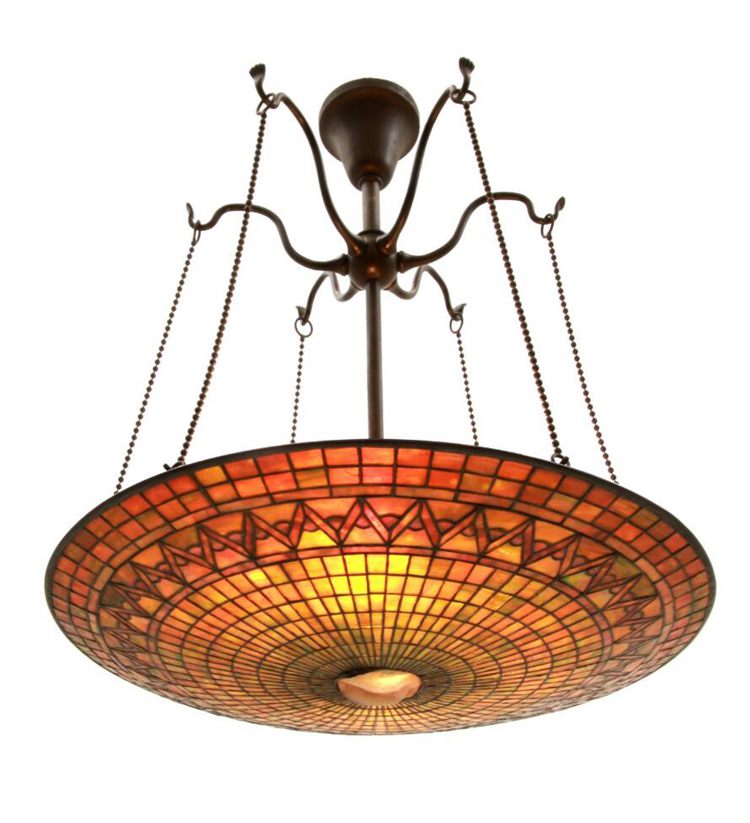
16. Tiffany Studios Dichroic Geometric Table Lamp sold for $22,000.00
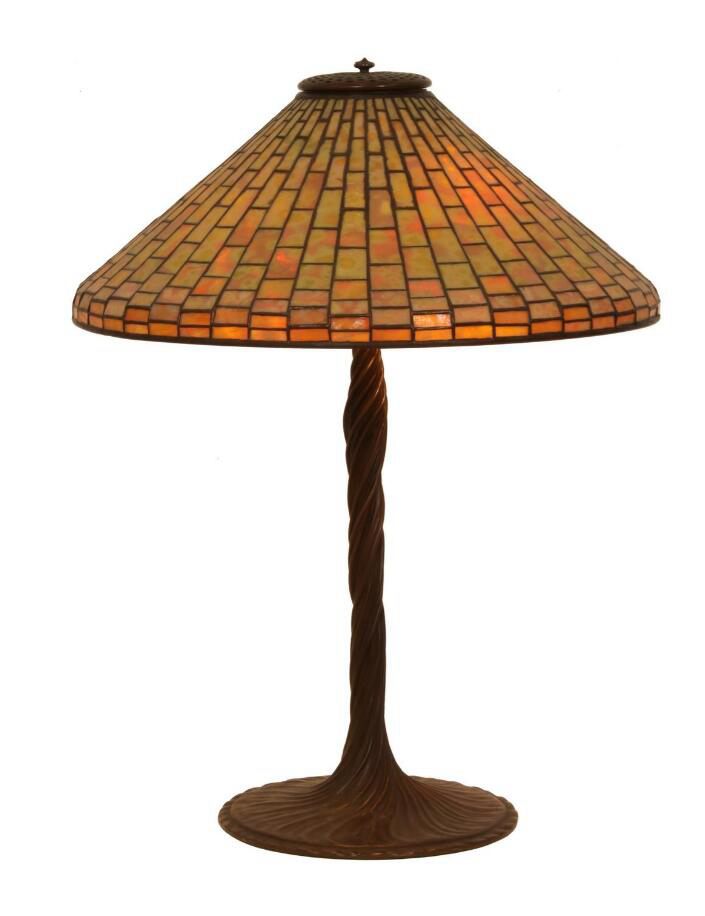
17. Tiffany Studios Grapevine Desk Lamp sold for $5,000.00
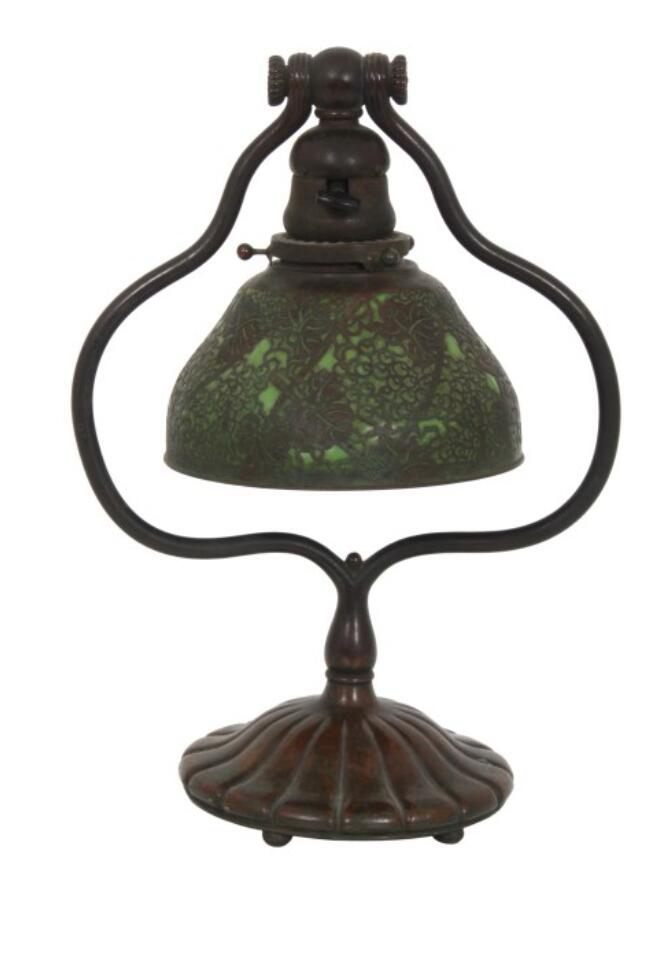
18. Three-light bronze base with gold Favrile glass shades, circa 1910
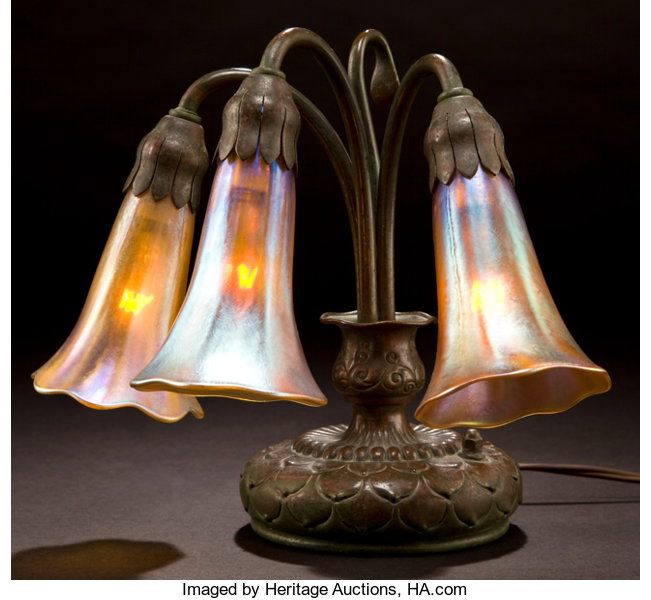
19. Leaded Glass Poinsettia Table Lamp sold for $800.00
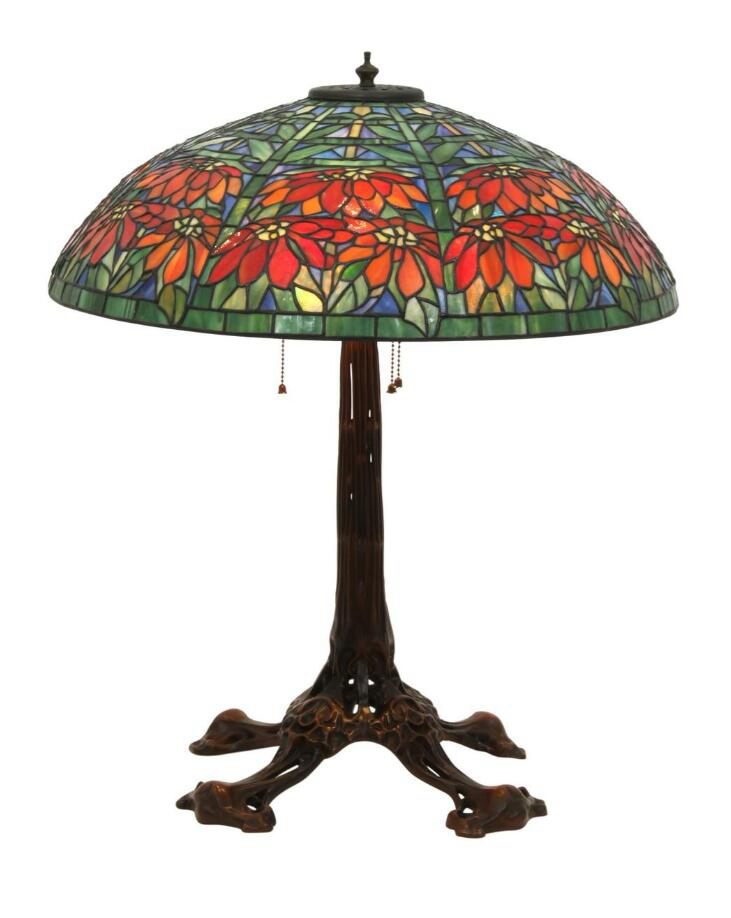
20. Tiffany Studios leaded glass and bronze Peony table lamp, circa 1915 sold for $93,750
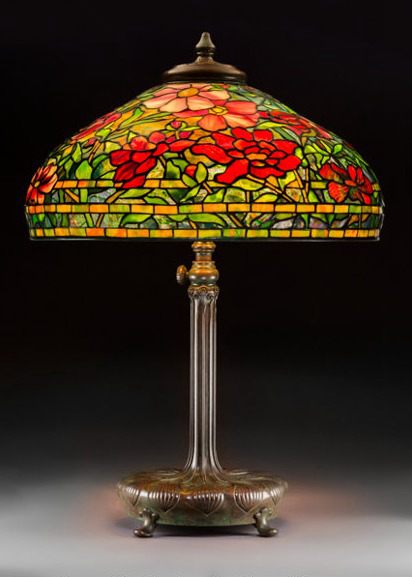
21. Tiffany Studios Leaded Glass and Bronze Geranium
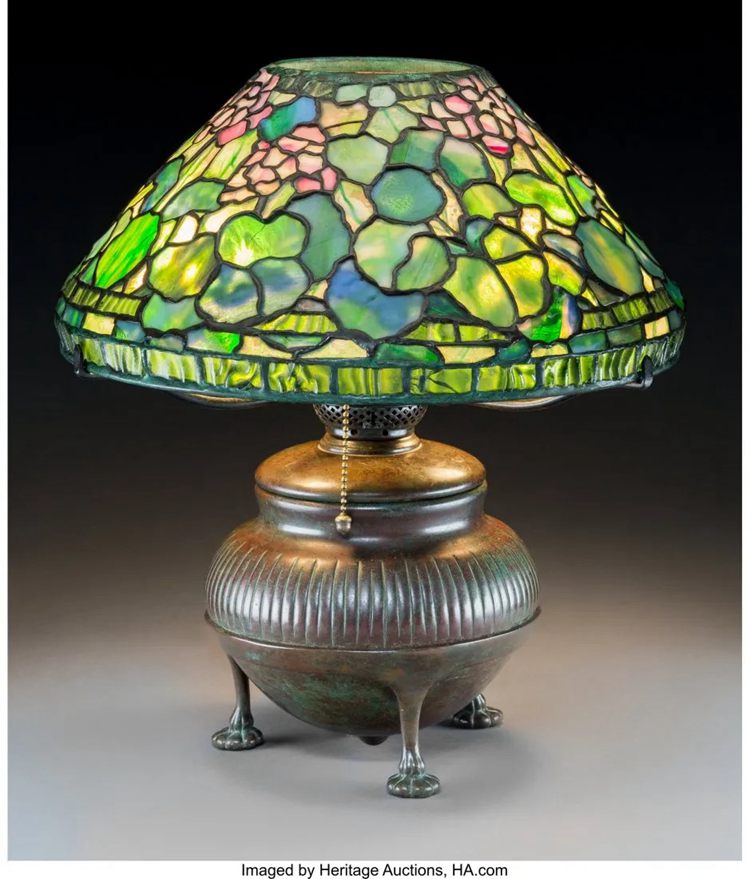
22. Tiffany Studios Leaded Glass and Bronze Tulip Ta
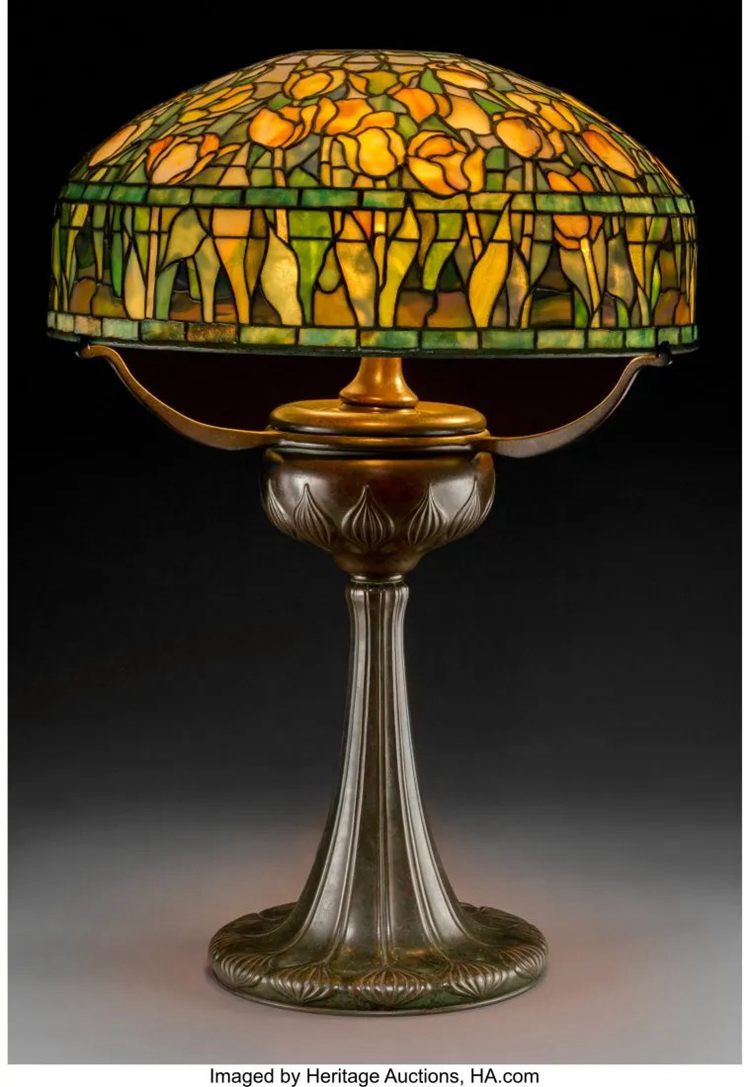
23. Tiffany Studios leaded glass and patinated bronze Dragonfly table lamp, circa 1910 sold for $150,000
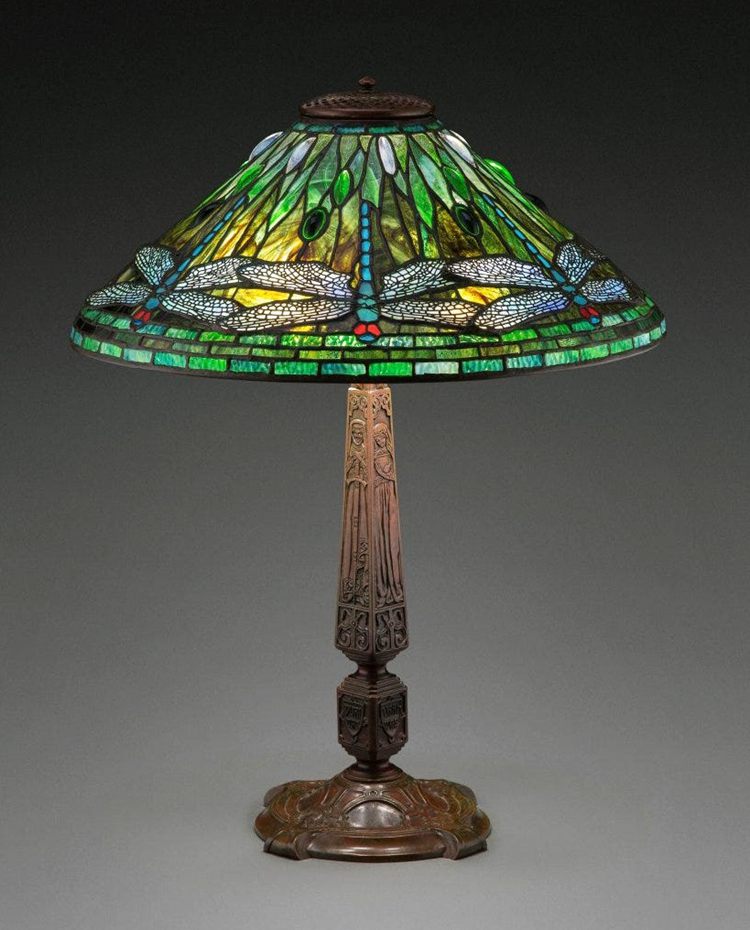
Identification of Antique Tiffany Lamps
There aren’t many strict guidelines because Tiffany made several lamps that were made to custom. When it comes to authentication, a combination of factors is more important. However, if you’re identifying a lamp at your house, at a yard sale or antique store, keep an eye out for these features to help identify whether it is an authentic or not.
-
Origin
Ask the expert to identify the prior owner if you’re in an antique store or other sale to learn more about its history. There is a higher likelihood that it is a genuine Tiffany lamp, according to Fontaine, if it came from an estate or was owned for the previous 40 to 50 years by the same person.
-
Age
A genuine lamp won’t appear to be brand-new. On the lamp’s bronze components, there will be what is referred to as patina, or fading or minor color changes. Even this, though, is not always a sure thing. Fontaine claims that really good replicas imitate base aging.
-
Stamps
Tiffany Studios’ stamp with a number was typically found on the base of Tiffany lamps. Many of the glass shades also had stamps on them. Furthermore, keep in mind that a product with the Tiffany & Co. stamp, a symbol for a high-end jewelry and luxury goods store, is not the same. Tiffany Studios New York was stamped on Louis Comfort Tiffany’s lamps.
-
The Glass
Tiffany Studios produced the majority of its premium glass in New York. Tiffany employed a few strategies to make its lights distinctive.
One type of glass is called confetti glass because it contains numerous shards of glass with various colored particles on them. Second, when the lamp is lit, the color of the glass genuinely changes.
-
Motifs
TIFFANY STUDIOS LAMPS ARE UNIQUELY STYLISH, MAKING THEM UNIQUELY ICONIC. With popular themes including daffodils, dragonflies, Greek keys, fish, peacocks, butterflies, poppies, and wisterias among other nature-inspired motifs, they frequently have designs that are influenced by the beauty of nature.
One of several unique lamp shade categories best describes the majority of Vintage Tiffany lamps:
- Jeweled Feather Shades– Below the jeweled feather glass, there is typically a geometric pattern.
- Overlay Shades– Shades with a bronze overlay and a glass liner are called overlay shades.
- Linenfold shade– Glass in these paneled linenfold shades is formed like a linenfold.
- Floral shades– Leaded glass shades with floral, leaf, and vine themes that can either completely encircle the shade or be in a border are included in this category.
- Favrile glass shades– Favrile glass lampshades have shimmering glass and are described as “handcrafted.”
- Turtleback shades– Shades having a turtleback band that is surrounded by a geometric pattern, or shades made entirely of turtleback glass.
- Shades with Figural motifs– These leaded glass shades have aquatic, peacock, dragonfly, and butterfly motifs.
- Geometric shades– This category of leaded glass shades has designs made up of basic shapes like triangles, squares, and rectangles.
-
Light plug
Tiffany Studios often constructed their lamps with a turn-paddle knob socket for on/off functionality. A pull chain was used to create a smaller quantity. The sockets were mostly produced by businesses like General Electric, Bryant, and Perkins, according to Sandberg. A modified socket could have an impact on value. A turn switch may also be located at the base of some Tiffany lamps.
-
Base
Tiffany almost usually used bronze for the base of its lamps. There was no wood, plastic, brass, or zinc bases, which are typical of less expensive models. However, bases for art ceramics were created very infrequently.
-
Lead filling
Tiffany Studios made the bases of the lamps hollow due to the exorbitant cost of bronze at the time the lamps were being created. A large lead ring was inserted into the base of the lamp to support the weighty glass shades. You should notice grey lead if you lift the base cap and peek into the base.
-
Hit the shade
Grab the glass shade’s top and lightly tap the glass with it. The shade should tremble due to its antiquity and the drying of the wax that holds the glass together, according to Fontaine. A glass shade that is more stable and doesn’t ratchet might be a fake.
Make sure you have a money-back guarantee if you’re purchasing what you believe to be an original vintage Tiffany lamp. You can be paying a lot of money on what might be a fake if a store won’t provide one.
How to Buy Original Vintage Tiffany Lamps?
While a select few have been fortunate enough to uncover valuable Tiffany lamps at antique stores, estate auctions, and family attics, it’s more common to find an antique Tiffany lamp for sale through an auction house or gallery. The procedure for placing a bid on one of these lamps usually goes like this:
- Examine the catalog– A pre-auction catalog is typically provided by galleries. This list of things will be up for bid that day, giving you time to look them over and decide which one’s interest you.
- Attend the auction– There are a few more ways to place a bid on products, though live auctions are thrilling. The majority of houses also allow phone, online, and absentee bidding.
- View it in person– As opposed to merely watching anything on a screen, seeing something in person can alter your perception of it. You can ask the auction house for a thorough report on the item’s history and condition in addition to viewing it in person.
Where to buy and sell these Vintage Tiffany Lamps?
There are only a few places to find priceless old Tiffany lamps, but internet auction sites are your best bet. Other choices include of:
- Classifieds online websites
- Auction houses such as Fontaine’s Auction, liveauctioneers, among others.
- Local thrift shops
- Reliable vendors
- Vintage lamps exhibition
Summary
Tiffany lamps are classic works of art that are handmade. Amazing stained glass models were made by a large number of artisans and craftspeople using complicated designs.
For lamp bases, Louis Comfort Tiffany liked utilizing bronze or wood and dozens of precisely cut pieces of stained glass for shades. If you can afford one, you can adorn your home with an incredible piece of furniture that also serves a useful purpose.
Frequently Asked Questions
-
What qualities should I search for in a Tiffany lamp?
Genuine Tiffany lamp shades have to “flow” naturally and have a globe or cone shape. The form of fake replicas is frequently more stiff. Regarding the themes employed, popular designs included geometric patterns, botanical patterns, dragonflies, peacock feathers, butterflies, and spiders.
-
How valuable are Tiffany lamps?
Because they are never mass-produced or manufactured, Tiffany lights are pricey. Since each lamp is individually handmade, the cost of production is considerable due to the labor-intensive nature of the process. Second, expensive, high-quality materials are used in their production.
-
What number of Tiffany lights exist?
Only 14 are believed to exist, and only five of those, including the lamp, are in museum collections, such as the Metropolitan Museum of Art. Louis Comfort Tiffany (1848–1933) was a decorator, artist, and a designer. He should not be confused with his father Charles Tiffany, who established the renowned jewelry company Tiffany & Company.
Our Takeaway
Using this guide to recognizing and assessing antique tiffany lamps, you can determine their market value regardless of the circumstances. But if you want to completely appreciate the worth and value of your vintage tiffany lamps, we strongly recommended that you go see a competent appraiser.

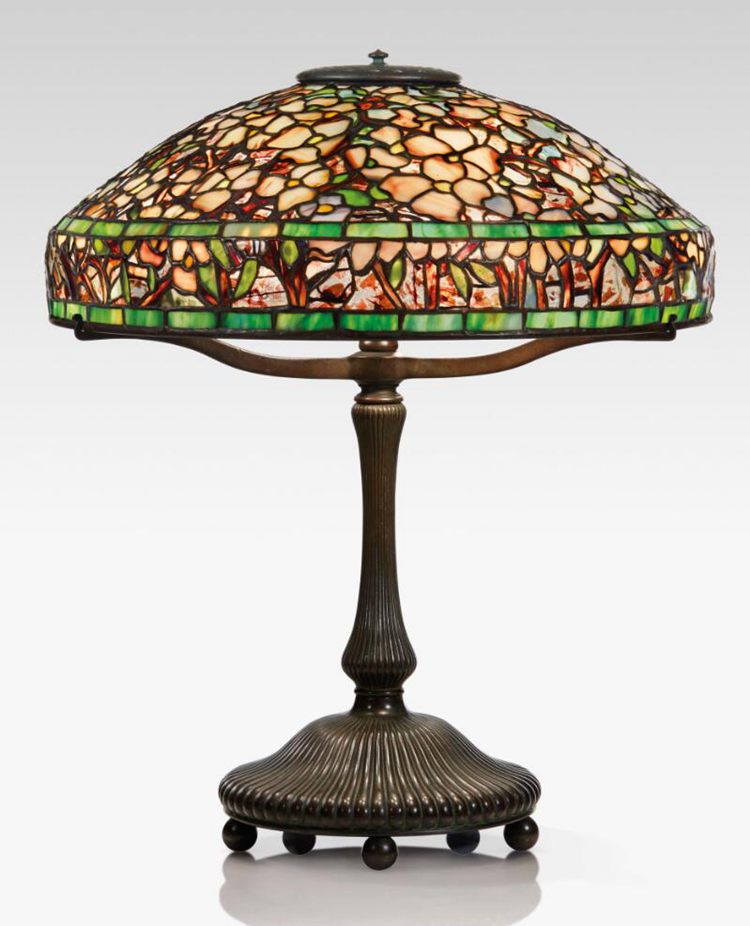




![Where To Sell Antique Furniture In 2022 [Ultimate Guide]](https://www.jacquelinestallone.com/wp-content/uploads/2022/09/Etsy-Your-Place-To-Buy-And-Sell-All-Things-Handmade-600x450.jpg)


